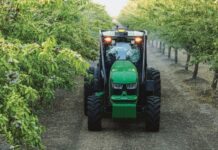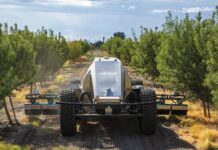
When we think of profitability, it’s common to use a simple, black and white theory: Spend less on producing your crop than what you can sell it for. Developing a successful profitability equation is much more nuanced. Grape growers who take the time to develop a solid financial foundation and proactive plan give themselves an edge when it comes to overcoming the challenges of earning a profit.
Many variables can negatively impact profitability: labor costs, water access/availability, changes in pest management strategy, etc. Your chances of success will increase if your financial position is stable and capable of adapting to variable conditions, whether caused by economic or environmental forces, or a combination of the two.
Grape growers can take steps to strengthen their financial position if they consider a few critical factors that will impact profitability this year.
Where Can You Find Cost Savings?
Despite many costs creeping up, there are savings to be had if you look in the right places. As a starting point, it’s a good practice to review your interest expense and research different lending options that could have the potential to lower the overall cost of borrowing.
Over the last few years, growers have seen a much higher percentage of their profits eaten up by interest expenses due to rising interest rates. At least in the short term, interest rates will continue to be a big topic of concern for growers. Despite more-active-than-expected inflation data, in May the Federal Reserve decided to maintain interest rates at their current levels for the sixth-straight meeting, keeping rates at a 23-year high as they wait for more reassuring signs of controlled inflation before considering a rate cut. You can’t control rates, but you can take advantage of promotional offers alongside traditional fixed-rate financing to avoid overpaying on interest expenses. In many cases, this approach will bring the total effective interest rate down to a level that, when consolidated, lands below Prime.
Take a hypothetical example where a grape grower finances an equal amount for three different input purchases over the same financing period. In addition to their own in-house financing offer, a retailer may have access to a variety of promotional rate offers on some brands. For example, a financing package might look like:
- Product A at 9% APR
- Product B at 2% APR
- Product C at 4% APR
If this grower paid for these products with their operating line of credit, they would be looking at a financing rate ranging between 7% to 11% APR. If this same grower used the blended approach and took advantage of the option to finance the purchase of all three products, they would bring their effective interest rate down to 5% APR, which adds up to meaningful savings on interest expense.
Proactive Cash Flow Considerations
It’s not enough to have the right mix of crop nutrition and protection products; you have to go a step further and think about how and when you’re paying for those products, and checking that strategy to make sure you are giving yourself the most flexibility when it comes to managing your money.
Grape growers also need to look closely at their cash flow to ensure profitability. Those who evaluate the terms of their financing programs and line up payment due dates with the crop schedule will create more financial stability for their operation, which can pay dividends when you come up against the unexpected.
Say your crop is infested with bunch rot near harvest. You may not have cash on hand for a few more months until harvest proceeds are recorded, but if you take the time now, in early season, to diversify your capital and use financing programs strategically, you’ll be able to preserve cash from your operating line. Imagine down the road, come harvest time when your financial picture is probably a little tighter, the relief you’ll feel knowing your operating line isn’t fully leveraged and you still have some flexibility. Consider how your needs may shift between now and harvest and look for ways that you can give yourself more options in terms of how and when to spend your capital.
Protect Your Vineyards Against Market Volatility and Other Uncertainties
This year, like every other year, you are going to face challenges. Some may be driven by the market, others by Mother Nature and more still by things you probably haven’t considered. Most of these variables are beyond your control; no one has a crystal ball to show where the market will go, and it’s hard to predict how consumer preferences are going to shift and how that will impact variety selection and decisions to protect the health and vitality of your vineyard. The inherent challenge in the ag industry is for growers to come up with a winning plan despite success being so dependent on variables beyond your control. It may leave you feeling powerless, but there are a few proven strategies you can implement to protect your operation, create some peace of mind for your financial security, and prepare to respond to whatever comes your way.
Start with your capital management strategy and surround yourself with people who can provide partnership and expertise to enable your success. It may seem like a basic principle, but diversification is also critical to manage your risk. Especially when it comes to your finances, don’t underestimate the value of having a diverse stream of capital to pull from. This ensures you aren’t overextending yourself, and that you have more options when it comes to sourcing capital.
Having a sound financial plan is also a helpful practice to develop useful contingency plans and to avoid situations where you might take a financial hit because of something unexpected. Financing crop inputs enables you to keep cash on-hand so your backup plan has maximum flexibility to respond to unforeseen expenses. On the flip side, growers who use their operating note to pay for operational expenses may not have as much financial latitude. Something growers may lack if they use their operating note to pay for operational expenses.
Summer is a great time to develop or adjust your financial plan with an eye toward profitability. If you invest the time and energy in setting up a solid financial foundation for the year ahead, there’s no reason to believe 2024 won’t be your most successful year.
Jacquelyn Fernandes is a territory manager with Nutrien Financial. She provides financing expertise to growers throughout the western U.S. to increase their buying power and maximize every opportunity for success. Learn more at NutrienFinancial.com.











